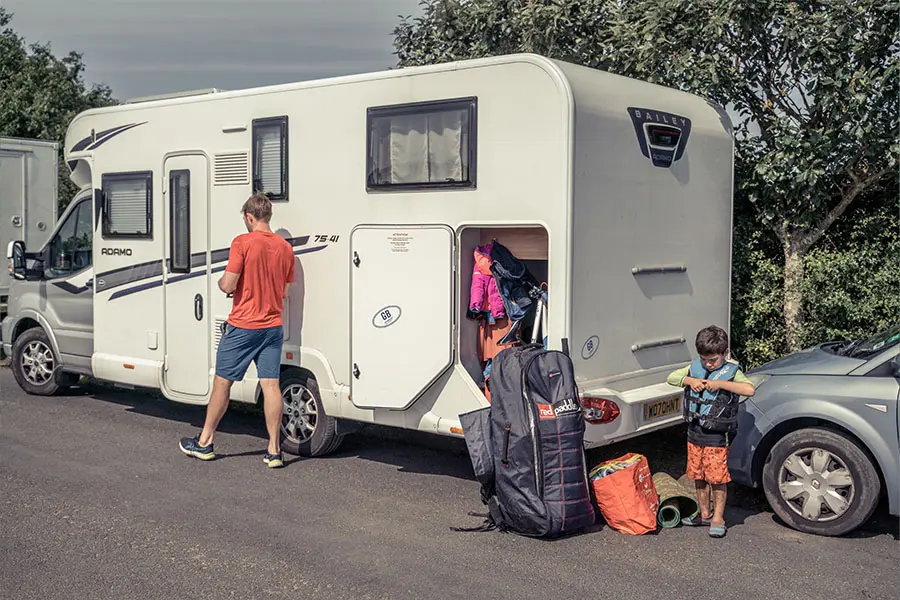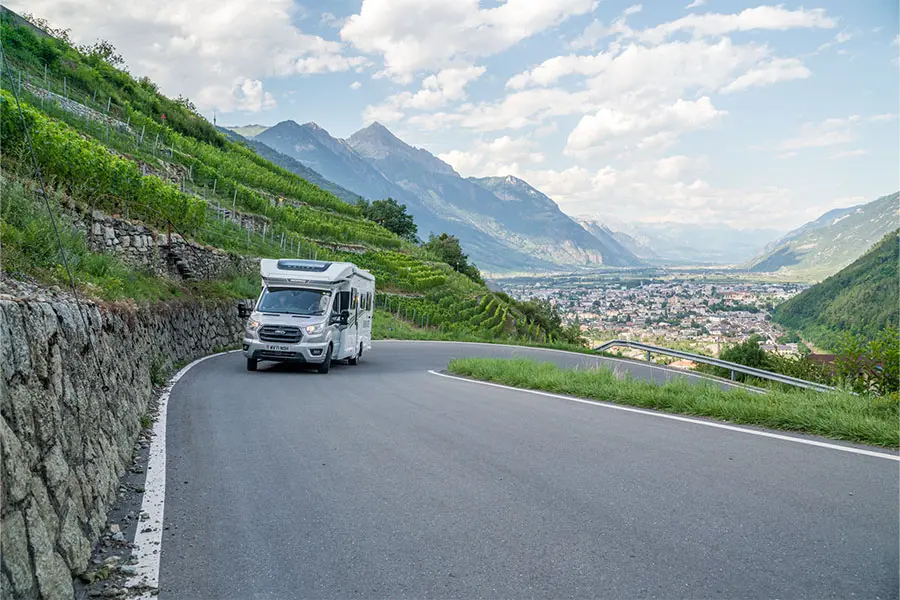How to load your motorhome
Calculating this weight carrying capacity, or payload, is as simple as subtracting one figure from another – the Mass in Running Order (MRO) from the Maximum Technically Permissible Laden Mass (MTPLM). Both figures can be found in the handbook or on a data sticker attached to the side of the motorhome. The difference between these figures will tell you, in kilos, how much you can pack.
For example, if the MRO is 3055kg and the MTPLM is 3500kg, subtracting 3055kg from 3500kg gives the motorhome a payload of 445kg.
The motorhome’s MRO (or unladen weight) includes the weight of the vehicle’s driver (75kg), a fuel tank that’s 90% full (81 kilograms), 1x gas bottle (14kg), and a leisure battery (25kgs) – if a leisure battery is supplied as standard. In addition, should the motorhome be fitted with Alde heating, an extra 10kgs is added for fluid used in the system.
The MRO is calculated with the freshwater tank empty. Travelling with water in this tank isn’t recommended, but your available payload will reduce accordingly if you choose to do so. One litre of water weighs approximately 1kg.
If you’ve had any equipment fitted to the motorhome since it left the factory, such as a bike rack or solar panel, the weight of these items will also need to be deducted from your payload figure.
Finally, as the MRO includes the driver, the passenger’s weight should also be considered when loading your vehicle.

How to load your motorhome
Packing your motorhome essentials correctly makes the vehicle comfortable to drive and maximises its performance.
- The heaviest items, such as awning, BBQ or outdoor chairs, should be loaded low down and over the axles if possible.
- The medium-weight items, such as pots, pans, drinks, and tinned food, should be loaded between ankle and waist height, possibly under the seats. Again, this weight should be as close to the axles as possible.
- Lighter items, such as clothing, can be loaded higher up in the roof lockers or wardrobes. Just be aware that the higher the weight, the more it affects the motorhome’s centre of gravity.
The other consideration when packing your motorhome is to ensure everything is stowed securely to minimise noise levels while travelling, as this will make your journey a pleasant one.

Jump to:
- Beginners Guide to Motorhoming – Homepage
- How to load your motorhome
- How to use your motorhome cab: Ford
- How to use your motorhome cab: Peugeot
- Arriving on site: How to level your motorhome
- Arriving on site: Electrical system
- Arriving on site: Gas system
- Arriving on site: Water system
- Arriving on site: How to set up your Truma or Alde heating system
- Arriving on site: Toilet cassette
- Arriving on site: Fridge
- Arriving on site: Hob, oven and grill
- Arriving on site: TV aerial
- Arriving on site: How to set up your wind out awning
- Glossary
Previous
Beginners Guide to Motorhoming
Next
How to use your motorhome cab: Ford